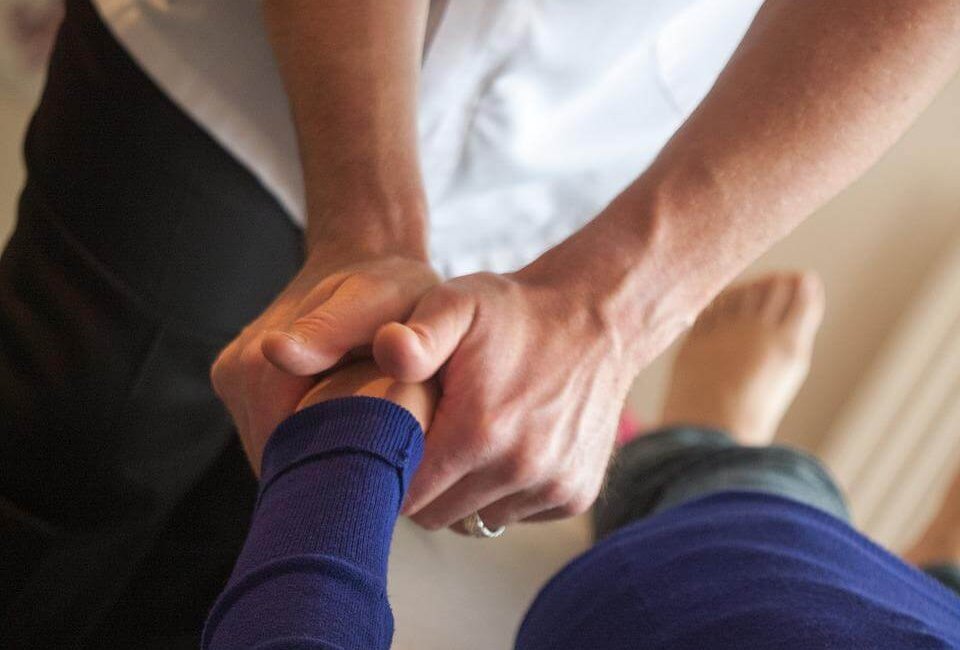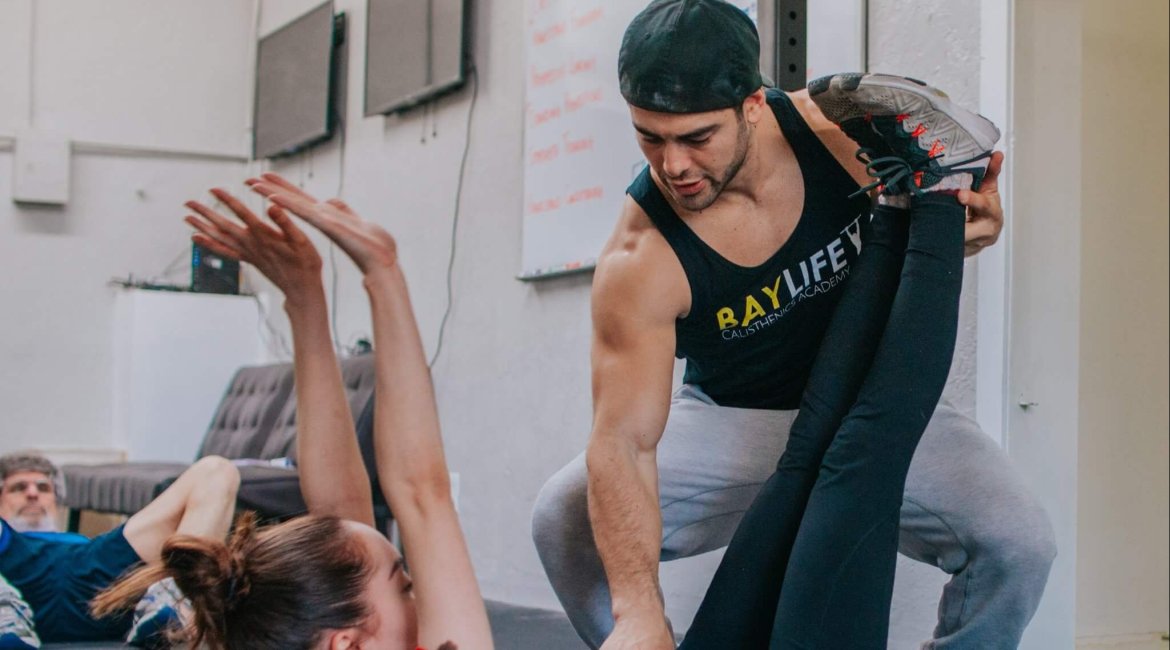Assisted stretching: what is it and how can it help?
What is assisted stretching?
Assisted stretching is a service where a certified professional will help you stretch your body. One of the best ways to understand what assisted stretching is is to look at what happens in an assisted stretching session. Your therapist will ask you questions about your health and problem areas and any issues with pain. The next stage will be for them to guide you through a series of stretches while they provide support and assistance ensuring you get the most out of each one.
How can assisted stretching help me?
Now you know a little bit about what assistants stretch, it’s time to look at how it can benefit you and improve your life.
Pain relief for sore muscles
The first significant benefit of assisted stretching is that it can help you if you are suffering from muscle pain. This is because assisted stretching boosts flexibility, improves range of motion, and can help alleviate pain in the body.
Improving flexibility can help to lessen pain in the body by improving your range of motion and lessening joint and muscle tension. Indeed when muscles are overly tight they put additional stress on bones and this can cause pain. The good news is by increasing your flexibility you can reduce this strain and the pain associated with it.
Boost circulation
Assisted stretching can be beneficial to your health by boosting the circulation of blood around the body. The great thing about good circulation is that it promotes healing and ensures that all your muscles and organs have a fresh supply of oxygenated blood which will help them to work more effectively as well as remove waste and toxins from the body in the most efficient way possible.
Enhance flexibility
Before we get into the benefit of enhanced flexibility it’s important to define the differences between flexibility and range of motion. For example range of Motion is about how well a joint can move through its full range. However, flexibility is concerned with how well a specific muscle is able to lengthen. The good news is that assisted stretching can help improve both.
Indeed, if you’re looking to boost your flexibility and reduce overall pain, assisted stretching is a great option. The reason that assisted stretching can do this is that the stretch is applied directly to the muscle as opposed to the person having to do the stretch themselves. The good news is this is much more effective in length and in the muscle and so enhances flexibility.
Improves range of motion
Another major benefit of assisted stretching is that by working with a therapist you will have access to extra support during the stretch. What this means is that you and the therapist working together can achieve a greater level of resistance, as well as support you in getting into the right positions which in turn can help improve the range of motion through the joint.
Targets areas of concern
You probably already know that stretching is a great way to ease feelings of discomfort in the body. However, what you may not be aware of is that assisted stretching can be used to target very specific areas of concern or pain and improve them.
Indeed in an assisted stretching session, you can choose to work on a range of muscles and joints or dedicate that time to a very specific problem. something that in turn can make it a very effective way of resolving any area of concern.
Helps you to get a deeper stretch
A nice deep stretch can feel really good, but not everyone has the ability to get into these positions on their own. Happily, assisted stretching can offer you the support and guidance you need to increase the depth of your stretches and reap the benefits of this.
This is because in an assisted stretching session an experienced therapist will gently adjust your joints and muscles supporting you in stretching further than you could do alone.
Indeed, because you have an experienced professional to support and guide you, you get into the most effective positions while making sure you keep safe and don’t end up pushing past your own limits.
This can be particularly beneficial if you’re looking to increase your flexibility for overall pain relief, or for specific activities like yoga or dance. Assisted stretching can also help reduce the risk of injury when doing sports or simply living your day-to-day life.
Enhances sports performance
If you are an athlete that spends a great deal of your spare time engaged in sports or you have a physical hobby then assisted stretching can help you enhance your performance. This is because assisted stretching is able to boost both flexibility and range of motion, something that in turn can lead to improved performance as well as minimize the risk of injury.
The benefits of assisted stretching for overall pain relief
One of the key benefits of assisted stretching is pain relief if it makes sense to look into this aspect further. Assisted stretching can reduce pain because it targets particular areas of tightness and tension. In turn, this can be very effective at relieving knots that are responsible for pain.
Muscle knots, also called trigger points, can be painful or even cause pain in other areas of the body. An example of this is where a knotted muscle in the back might be responsible for head pain or a headache.
Often the causes of muscle knots and adhesions are poor posture overuse and repetitive movements, although they can also happen because of emotional stress. After all, we tend to tense up when finding ourselves in stressful situations, as part of our flight or fight response. Something that means if we are exposed to long periods of stress this tension can become chronic.
Assisted stretching can combat all of these issues thereby helping to relieve pain and loosen knots and adhesion in muscles.
How to get started with assisted stretching for better flexibility
Enhanced flexibility is all about lengthening the muscle; the process is relatively easy. First of all, you will need to find an experienced therapist that can support you, guide you and help you stretch in a safe way.
While working with such a therapist your combined goal will be to gently and gradually increase the length and intensity of these stretches thereby increasing flexibility. Indeed, with regular assisted stretching sessions you will be amazed at the improvement in inflexibility you see.
Tips for making the most of your assisted stretching routine
There is a range of actions you can take to make sure you get the most from your assisted stretching routine: Warmed up before you begin your assisted stretching. walking or jogging gently for 5 more minutes will be enough to warm up your muscles so they are ready to be stretched.
Another important factor to consider if you want to get the most from your assisting stretching routine is making sure that you are not pushing yourself over your own limits. Indeed it is crucial to listen to your body and only push far as you feel comfortable. After all, our body sends pain signals for a reason and it is to protect us. The good news is that your assisted stretching therapist will be able to help you recognize the difference between discomfort and pain during your sessions, ensuring you stay safe.
Making sure you remember to breathe deeply as you stretch is also vital to making the most out of your assisted stretching session. This is because deep breathing will help you relax which in turn will send signals to your muscles and joints to stop tensing and so help improve your flexibility.
Lastly, if you want to see the best results from your assisted stretching sessions it’s important to attend them regularly. Experts recommend around 3 to 4 sessions a week to deal with specific issues or target areas.
Assisted stretching: FAQs
There are many questions about assisted stretching. In this section, we identify and answer the most common ones.
Who can benefit from assisted stretching?
The great thing about assisted stretching is that anyone of any age or fitness level can benefit from the practice. Indeed professional or semi-professional athletes such as Footballers, basketball players, and tennis pros often use assisted stretching to improve their flexibility, range of motion, and performance. Dancers and fitness instructors can also find assisted stretching very helpful for both staying fit, and dealing with specific injuries.
However, anyone that has a body to move can also access the benefits of assisted stretching such as reduced pain, better flexibility, and less stiffness.
How often should I do assisted stretching?
Well, there is no one-size-fits-all answer to the question of how often you should do assisted stretching, studies do show that it can be beneficial to do it at least once every week.
Additionally, if you have an area that you are working on or a specific injury more frequent assisted stretching sessions may be needed. Your assisted stretching therapist will be able to advise you on the best personalized program for your specific needs.
What are some common concerns people have about assisted stretching?
One of the most common concerns that people have about assisted stretching is the pain involved. However, it is important to note that while there will be some discomfort during the stretch, this does mean that it is working and getting to the root of the issue.
However, intense pain is not part of the assisted stretching process, and your therapist will educate you on how to tell the difference between the two and thereby keep yourself safe and happy during your sessions. Indeed your assisted stretching therapist will place an emphasis on going at the pace you set during the sessions and listening to your body and how it responds.
Is there anything I should be aware of before starting assisted stretching?
Before you begin your assisted stretching session there are a few things to take stock of. The first is any pain, stiffness, or discomfort in particular areas of the body. Such sensations usually indicate the best place to begin the treatment, so be sure to take some quiet time at the beginning of the session to tune in to what is going on in your body.
Final thoughts
Assisted stretching is an incredibly effective solution to a range of issues, as you can see above. One of the best things about assisted stretching is that highly trained professionals will help you achieve your goals in a safe and comfortable setting. Thereby improving your flexibility and range of motion, decreasing pain, and even targeting specific areas of concern.
We all know how good it feels to have somebody give us a nice stretch when our muscles are tight. With assisted stretching, you can have this feeling all the time. If you are looking to feel loose, relaxed, and pain-free, try assisted stretching today.




